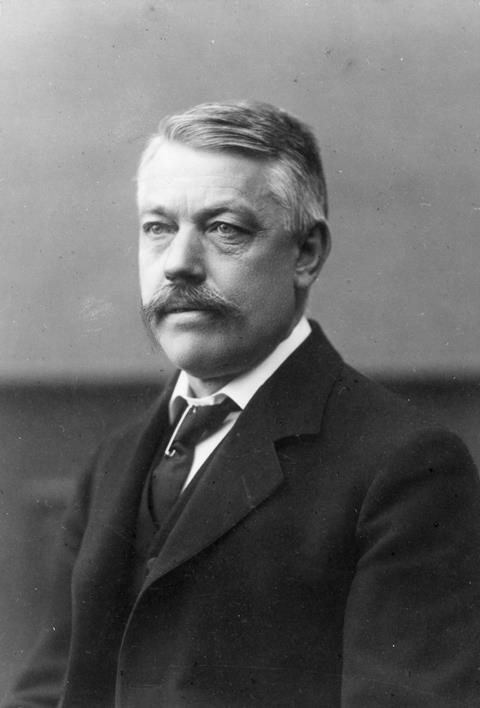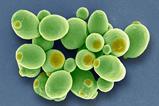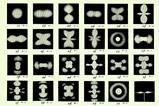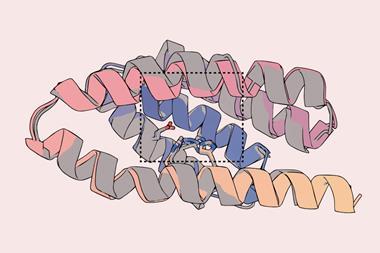While not a Nobel prize-winning discovery in itself, this challenge to the reductionist view of physiology has links to several other winners

Anyone encountering the Bohr effect for the first time could be forgiven for thinking that it was discovered by Niels Bohr, 1922 physics Nobel laureate for his work on the quantum atom. Given that the Bohr effect concerns the physiology of oxygen uptake in the blood, that would suggest a remarkable breadth of interest.
Niels Bohr did indeed dabble far and wide, but the Bohr effect is not his. It was a discovery made by Niels’ father Christian, a professor of physiology at the University of Copenhagen, Denmark, from 1890 to his early death in 1911. Christian Bohr found in 1904 that the binding of oxygen to haemoglobin in the lungs is sensitive to the partial pressure of carbon dioxide, becoming weaker as the carbon dioxide level rises. The effect is induced by a pH change caused by dissolution of carbon dioxide and consequent formation of carbonic acid. This means that haemoglobin is more apt to release oxygen in tissues where metabolic activity has increased the partial pressure of carbon dioxide – precisely where the demand for oxygen is greater.
It’s a classic example of biochemical homeostasis, and is mechanistically well understood today: in more acidic conditions the haemoglobin proteins undergo a cooperative conformation change that destabilises the oxygen-binding site. The Bohr effect is often considered the first known example of what in 1961 Jacques Monod and François Jacob called allostery, whereby ligand binding by one region of a protein changes the three-dimensional structure such that binding of a second ligand is affected.
No Nobel
So the Bohr effect was a significant discovery, and Christian was nominated for a Nobel prize in 1908. But perhaps it’s right that he didn’t get it. There’s the minor complication of a claim by a Russian chemist named Bronislav Verigo to have seen the same effect six years earlier. More problematic is the fact that the experimental work seems to have been done mostly by Bohr’s brilliant colleague August Krogh, who developed the apparatus for measuring gas concentrations. Some have argued that the phenomenon should be called the Krogh effect – or should also acknowledge the contributions of their young colleague Karl Hasselbach.
What is more, Krogh went on to show that some aspects of Bohr’s interpretation of the results were flawed (the two men stopped collaborating and even corresponding in 1907). Krogh did win a Nobel, in 1920, but for different work relating to blood flow in capillaries, and he subsequently set up the first company in Denmark to manufacture insulin for treating diabetes.
Bohr’s work revealed that living organisms relied on dynamic change driven by feedback loops: greater oxygen demand creates acidity which elicits enhanced oxygen delivery. Thus the biochemical specifics of physiology respond to higher-level processes (here, to more strenuous activity), implying that to understand the former we must take account of the whole organism. This perspective contrasted with the view of many physiologists that living organisms could be completely understood reductively by focusing on molecular mechanisms. A vigorous debate between mechanists and ‘organicists’ persisted into the early decades of the 20th century.
An unsettled question
With the advent of molecular biology in the 1950s and 60s, stimulated by the discovery of the double helix by Francis Crick and the late James Watson and by the work on gene regulation by Monod and Jacob, a reductionistic paradigm came to prevail. As Jacob put it in 1970, ‘the aim of modern biology is to interpret the properties of the organism by the structure of its constituent molecules’. Today some researchers are again questioning how much we can really understand about life purely from its molecules.
Christian Bohr liked to discuss such questions at his Copenhagen home with fellow scholars such as the philosopher Harald Høffding. Those discussions were overheard by Christian’s son Niels, and it seems they informed his own musings about biology. In a 1932 talk at a conference on ‘light therapy’, titled ‘Light and Life’, Niels Bohr suggested that a reductionist and an organicist perspective might be complementary: a notion he had introduced in quantum physics to describe how two apparently exclusive viewpoints (waves or particles?) were both needed for a complete understanding of a system. If we insist on studying life down to the molecular level, he said, we have to kill the organism.
That wasn’t really true, and certainly isn’t today when there is a plethora of in vivo methods for watching biomolecules at work. Bohr’s talk wasn’t in itself significant for biology. But its indirect influence was profound, because in the audience was Max Delbrück, who at the time was working on nuclear physics with Lise Meitner. Delbrück’s interest was piqued, and he eventually switched fields, went to the California Institute of Technology in the US to study the genetics of viruses, and shared the 1969 Nobel prize in physiology or medicine.

















No comments yet